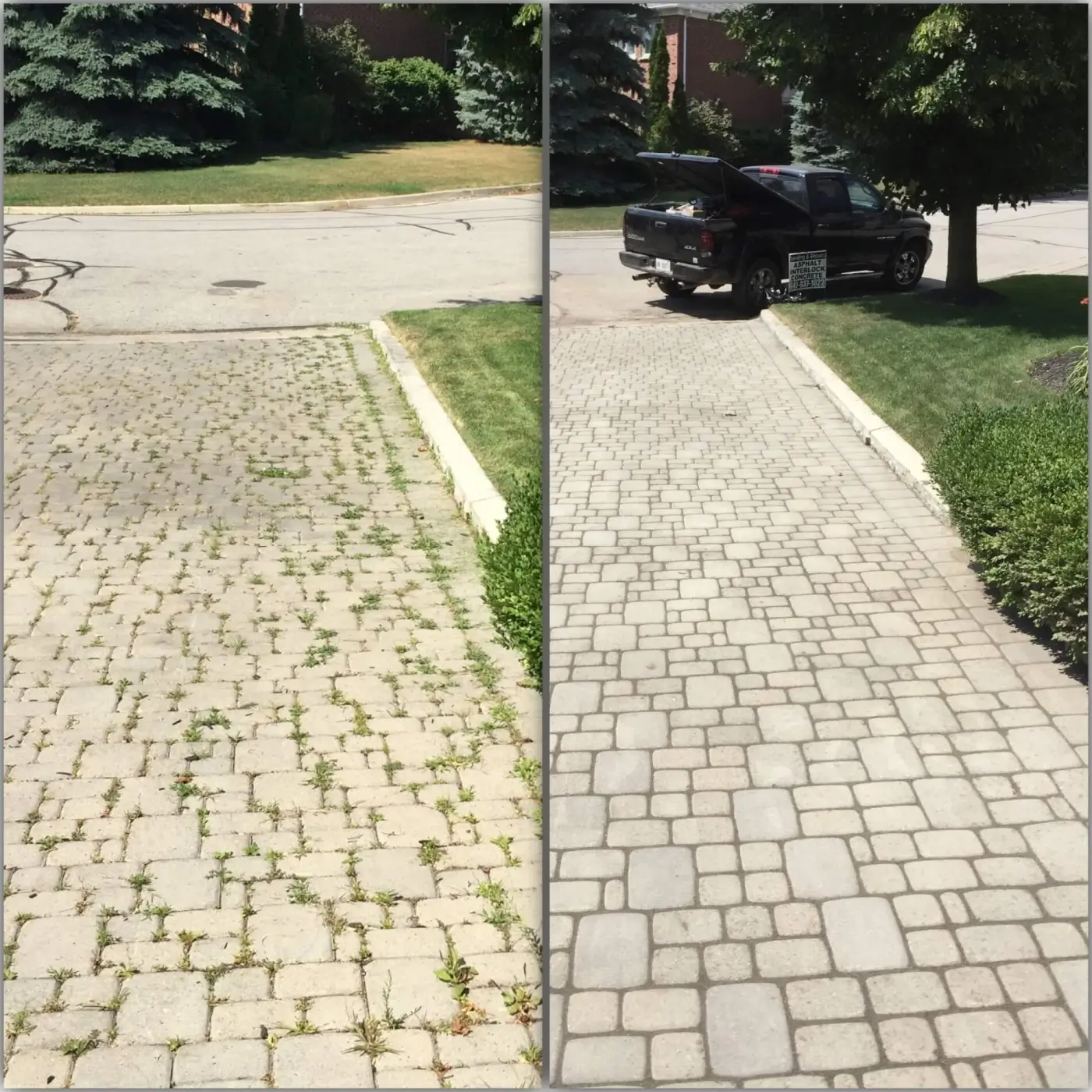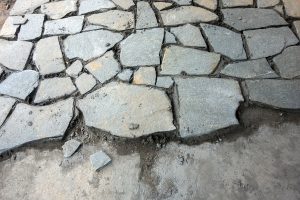
When it comes to landscaping, many people agree that interlocking brick driveways are aesthetically pleasing options for driveways, and are usually easy to maintain as well. This explains their popularity in many parts of the country. One of the common problems people encounter with these driveways is dealing with weeds. These usually grow between the interlocking bricks, particularly if the driveway is aging and the mortar holding the bricks together is falling apart. When left in this state, the driveway could become an eyesore, particularly if the weeds grow noticeably tall.
How Do Weeds Grow?
Like other plants, weeds grow abundantly when seeds find adequate soil and water to thrive. That being said, weeds grow differently in softscaping surfaces versus hardscaping surfaces. Weeds will often grow from the bottom of open softscaping surfaces, such as gardens because there is plenty of soft soil and water. For hardscaping surfaces, such as interlocking, weeds will grow from the top; they cannot grow from the bottom because there is no soil and they would not be able to break through the surface. So, how do the weeds grow? If your interlocking is not installed properly (we will discuss how to determine this), soil from nearby grass, gardens, etc., will find its way into the cracks. This can happen from people walking or driving over the surface, wind or water carrying the soil, and so on. Then, wind blows seeds on top of the soil, and weeds begin to grow.
There are quite a few methods that can be used to get rid of weeds in your interlocking. These methods range in cost, labour, and effectiveness; they include:
Methods:
Powerwashing
Powerwashing is definitely one of the easier, more affordable solutions to eliminate weeds, especially if you already have a powerwasher at home. This method is more effective on smaller weeds that grow on hardscaping surfaces such as brick interlocking, in addition to asphalt, concrete, pavers, slabs, and so on. That being said, this is a more reactive measure which may get rid of existing weeds, but will not prevent new ones from growing back. For a more permanent solution, power washing can be followed up with polymeric sand installation (keep reading to learn more).
Plain Salt

Many people find that pouring plain salt between the bricks will deter the growth of any plants in the area. Part of the reason for this is that salt is highly hygroscopic, which means that it absorbs water from the surrounding soil and makes it less suitable for plant growth. The frequency of doing this should be customized; you may need to experiment for some time before finding the ideal duration of time before you can apply more salt between the bricks for long-term weed growth prevention.
Polymeric Sand
Polymeric sand is easily the most effective, yet most labor-intensive method, also making it the most costly (when done right). Polymeric sand contains a mixture of chemical binders and additives, which causes the same chemical reaction as cement, concrete, and grout, when wet. When water is added to the mixture, the polymeric sand hardens and acts as a glue between the tiles, which resists water erosion, frost, wind, insects, and in this case, creates an uninhabitable environment for weeds. Keep in mind, the quality of sand you decide to purchase will have an impact on lifespan; lower-quality sand may last up to a few months or for a season, while higher-quality sand can last the duration of 10-15 years. There are two different methods for installing polymeric sand.
The first method involves filling in the gaps of your existing interlock. You will first want to remove the existing weeds with a powerwasher or similar method. Then, place a layer of polymeric sand between the cracks, on top of the existing sand and debris. Polymeric sand, such as polymeric sand, such as Magic Sand, can be found online or in stores at many hardware stores across the country.
The second method is a full lift-and-release tactic. This process entails removing the entire area of pavement and cleaning all of the stones from the edges, using a scraper. Then, the stones will be relaid and filled with a primary layer of new polymeric sand. These next steps are crucial. You will need to go in with a compactor machine (for pavement). The compactor causes vibrations that shake the sand between the joints and pushes the pavement into the ground. At this point, the sand level will likely condense to fill about 80 percent of the gaps. The additional 20 percent leaves room for soil to enter, resulting in weed growth. To avoid this, a secondary layer of polymeric sand is added after the compactor is used. Of course, this method is quite labour-intenisve, making it more costly. However, this is a more permanent solution that will only need to be done once, to keep your interlocking in great condition for years.
Full-Strength Vinegar
The use of full-strength vinegar to prevent weed growth is a cheap yet effective method of controlling the presence of weeds in the long term. Fortunately, this product is easy to find, and all you have to do is to pour it into the area between the bricks where the weeds grow. With time, they will wilt and die, and it will take a long time for them to grow again. This prevents the need for frequent weeding of the driveway.
Driveway Sealing
By far, the most effective way to prevent weed growth for the long term is by simply having the driveway sealed after interlock installation. By sealing the bricks, air and water are prevented from penetrating the surface of the driveway. Since plants need these elements in order to grow, the presence of the sealant ensures no plant growth at all. For best results, high quality sealant has to be used, and the correct skill has to be applied as well. This means that you have to consult a high-quality contractor for both the installation and sealing of the driveway.
Depending on various factors such as the rate of wear and environmental factors, pavement sealants may degrade over time. Your contractor should provide you with detailed information regarding the expected rate of degradation, so that you will know when to reseal the driveway. Typically, it takes years before this is necessary, particularly if high-quality products and skills are used in the installation. Remember that it is also important to regularly maintain your interlock by washing, sweeping, replacing broken stones, etc., to keep it in good condition.
These are just a few of the methods of weed growth prevention you can use for your interlocking brick driveway. You can always rely on an experienced contractor to give you more information regarding this, so that you don’t have to keep removing the weeds on a regular basis.


